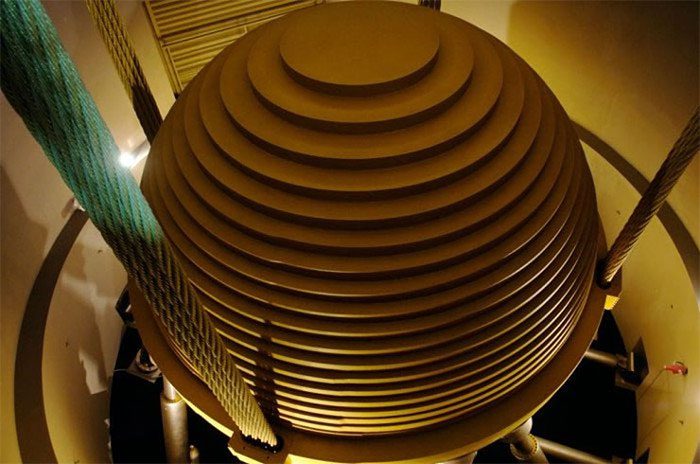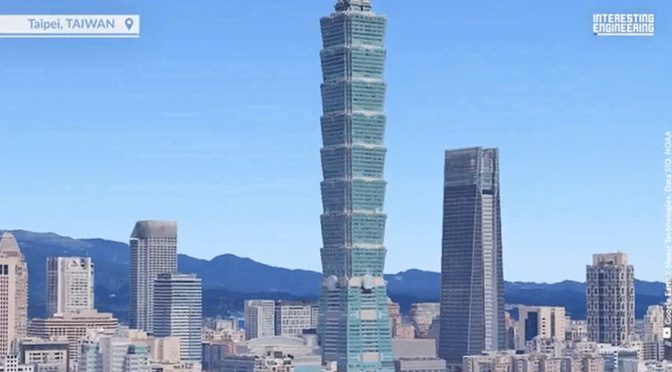Throughout the history of Earth’s formation, earthquakes have occurred in many places, and scientists have applied a variety of technologies to withstand this type of natural disaster.

A 730-ton steel ball installed inside Taipei 101, Taiwan, to resist earthquakes. (Image: Interesting Engineer).
An earthquake (or seismic event) is the shaking of the Earth’s surface resulting from the sudden release of energy in the Earth’s crust, producing seismic waves.
Earthquakes are primarily caused by the rupture of geological faults but can also originate from volcanic activity, landslides, explosions, or nuclear tests.
Throughout Earth’s history, earthquakes have occurred in many locations, and scientists have implemented various technologies to combat this natural disaster.
Among them, Japan is a leading nation with numerous earthquake-resistant technologies. Notably, the design of pendulums installed at the top of high-rise buildings to mitigate shaking is prominent.
This idea was proposed by the real estate development company Mitsui Fudosan and construction contractor Kajima Corp, which involves installing six giant steel pendulums, each weighing 300 tons, atop a 55-story building in Tokyo.
With a total cost of approximately 5 billion Japanese yen (equivalent to 51 million USD), the pendulum system will sway gently to “counteract” the forces that cause the building to sway, reducing earthquake vibrations by up to 60%.
Moreover, it shortens the duration of the building’s exposure to aftershocks and allows construction without affecting the structure.

Taipei 101 is one of the prides of the Taiwanese people (Taiwan, China). (Image: Interesting Engineer).
This technology was later applied to many other constructions worldwide, most notably the 509-meter-tall Taipei 101 building in Taipei, Taiwan (China).
According to the building’s design, a shock-absorbing system consisting of a giant 730-ton steel ball is located between the 88th and 92nd floors. This ball acts like a pendulum, generating appropriate force to counter any seismic shaking.
In addition to the famous pendulum system, Japan also employs “shock absorbers,” which are essentially hundreds of specialized earthquake-resistant devices installed beneath the foundations of high-rise buildings.
When an earthquake occurs, a building equipped with “shock absorbers” will sway, bobbing up and down on the solid foundation, gradually dissipating seismic vibrations without incurring any damage.
A notable structure equipped with the “shock absorber” system is the 7-story Red Cross Hospital in Ishinomaki, Miyagi Prefecture, located in the northeastern part of Honshu Island.
This hospital experienced a magnitude 9 earthquake on March 11, 2011, while two surgeries were in progress. Ultimately, all surgical operations were only paused for 10 seconds due to the activation of the backup power system.
All equipment and the overall design of the building remained undamaged by the earthquake.
Another popular earthquake-resistant system is the Tuned Mass Damper (TMD), which has now been installed in hundreds of skyscrapers around the world.
This system consists of a heavy device, referred to as a secondary mass, attached to the building and secured by steel cables, designed to counteract its movement during an earthquake.
Specifically, this system reacts to movement by shifting in the opposite direction. Therefore, when an earthquake or strong wind causes the building to rotate to the right, the TMD system will respond by rotating to the left, minimizing movement.
The Comcast Center in Philadelphia, USA, is equipped with this technology. The system helped it withstand a magnitude 5.8 earthquake that occurred on August 23, 2011, with almost no damage.


















































